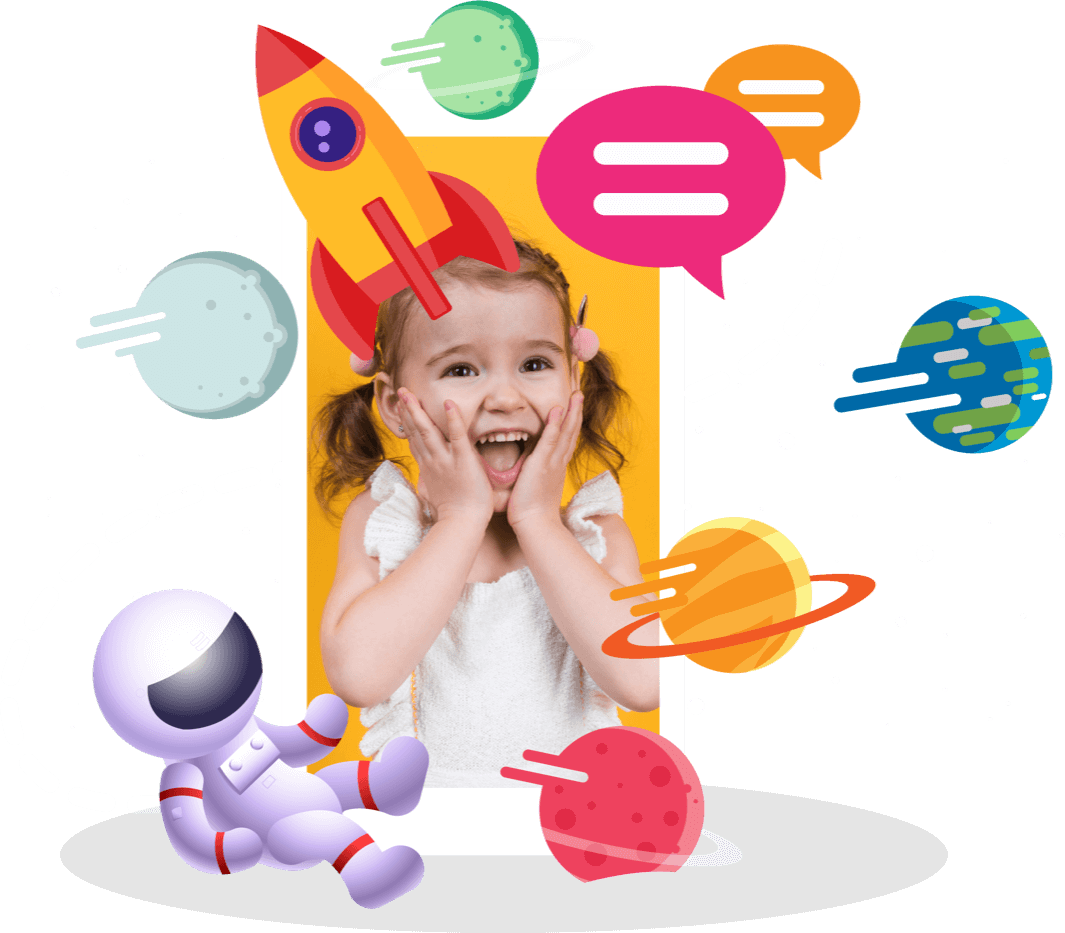In this article, we will be delving into various music therapy interventions and understand how these can contribute to better emotional and psychological health for individuals on the autism spectrum.
How Does Music Therapy Benefit Individuals with Autism?
Music therapy , an established and effective form of therapeutic intervention, has been proven to provide numerous benefits for individuals with autism. By stimulating both hemispheres of the brain, it helps in creating a balance that could enhance learning and improve physical coordination. Let’s uncover how music therapy can foster communication skills, manage sensory sensitivities, and improve emotional regulation.
Come along with 200k+ families!
Explore the endless possibilities of learning!
Download for Free.
Enhancing Communication Skills through Music Therapy
Autism often brings challenges in the realm of communication. These signs of autism and hurdles, however, can be effectively negotiated through the apt implementation of music therapy. According to Harvard Medical School , music therapy helps autistic individuals and a child with autism express their feelings, which they may otherwise find challenging.
Moreover, the repetitive nature of songs and rhythms aid in memorization and learning of new words. For instance, ’call and response’ songs, which encourage individuals to echo certain phrases, can be instrumental in enhancing speech and language skills. So, when words fail, music speaks - helping to bridge the communication gap for individuals with autism.
Managing Sensory Sensitivities with Music Therapy
People on the autism spectrum often experience heightened sensory sensitivities. Music therapy has the potential to soothe these sensory overloads. The rhythmic structure of music provides a sense of predictability and security, which helps in reducing anxiety and promotes relaxation.
Moreover, music therapy can act as a ’desensitization tool’, helping individuals with autism to tolerate a wider range of sounds. This process involves gradually introducing different music elements like volume changes, introducing new instruments, and varying rhythms, allowing individuals to adapt to diverse auditory experiences.
Improving Emotional Regulation via Music Therapy
Autism can also present challenges in understanding and expressing emotions. Music therapy offers a non-threatening medium for exploring feelings. It allows individuals to recognize and express emotions in a controlled environment, encouraging a better understanding of their emotional landscape.
In a study by The American Music Therapy Association , they found that music can act as an emotional outlet, allowing individuals with autism to express their feelings through musical improvisation. As a result, music therapy can contribute significantly to improved emotional regulation and overall mental wellbeing.

Music Therapy Interventions for Autism
When it comes to implementing music therapy for individuals with autism, a multi-faceted approach is crucial. Let’s examine some key interventions involving rhythmic patterns, singing, and the use of musical instruments.
The Role of Rhythmic Patterns in Music Therapy
Rhythmic patterns play a crucial role in music therapy for autism. These patterns offer predictability, making individuals feel secure and enabling them to participate more willingly. The rhythmic structure also helps in improving motor skills and coordination, further enhancing their physical abilities.
Incorporating Singing in Music Therapy Sessions
Singing is another key element of music therapy interventions. It aids in fostering communication and language skills. Through repetition of lyrics and chorus lines, individuals learn new words, aiding in their verbal communication skills. Singing also provides an opportunity to express emotions, serving as a therapeutic outlet for feelings.
Using Musical Instruments for Therapeutic Purposes
The use of musical instruments in therapy sessions can bring about significant improvements in motor skills and coordination. Playing an instrument can also foster social interaction skills. For instance, participating in a drum circle encourages cooperative play and improves attention span. Moreover, mastering an instrument can boost self-esteem and confidence, adding another feather to the therapeutic cap of music therapy.

Music Therapy vs. Traditional Therapies for Autism
While traditional therapies like speech therapy, occupational therapy, and behavioral interventions have their place in managing autism, music therapy brings unique benefits to the table. Let’s explore these advantages.
Advantages of Music Therapy over Speech Therapy
While speech therapy focuses mainly on language skills, music therapy covers a wider array of development areas. It aids in improving motor skills, social interaction, emotional regulation, along with communication skills. Furthermore, music therapy is often perceived as more enjoyable and engaging, leading to greater participation and progress.
Comparing Music Therapy and Occupational Therapy for Autism
Occupational therapy helps individuals with autism to develop daily living skills. In contrast, music therapy aids in emotional, social, and cognitive development. Thus, these therapies can complement each other effectively. With the addition of music therapy to occupational therapy, individuals can experience a holistic development approach that encompasses a wide range of skills.
Integrating Music Therapy and Behavioral Interventions for Autism
Behavioral interventions like Applied Behavior Analysis (ABA) are common treatment approaches for autism. Music therapy can be a beneficial addition to such interventions. Music serves as a motivating and rewarding stimulus, thus reinforcing positive behaviors. Furthermore, musical activities can make learning new skills more enjoyable and engaging, thereby increasing the effectiveness of behavioral interventions.
Come along with 200k+ families!
Let's communicate better!
Download for Free.
FAQs
What is music therapy?
Music therapy is a therapeutic intervention that utilizes music to address physical, emotional, cognitive, and social needs of individuals. It involves a range of activities, like singing, playing musical instruments, or simply listening to music.
How does music therapy benefit individuals with autism?
Music therapy can help individuals with autism in multiple ways, such as enhancing communication skills, managing sensory sensitivities, and improving emotional regulation. It can also boost motor skills and social interaction abilities.
What are the key interventions in music therapy for autism?
Key interventions in music therapy for autism include the use of rhythmic patterns, singing, and musical instruments. These methods help in improving a variety of skills and contribute to overall development.
How does music therapy compare to traditional therapies for autism?
While traditional therapies have their benefits, music therapy brings unique advantages. It covers a wider array of development areas and is often more engaging for individuals, leading to greater participation and progress.
Can music therapy be integrated with other therapies for autism?
Yes, music therapy can be effectively integrated with other therapies, like speech therapy, occupational therapy, and behavioral interventions. This integration allows for a holistic development approach for individuals with autism.
Is music therapy effective for all individuals with autism?
The effectiveness of music therapy can vary from person to person, based on their specific needs and responses to music. However, numerous studies have shown that music therapy can bring about significant improvements in various areas of development for many individuals with autism.






